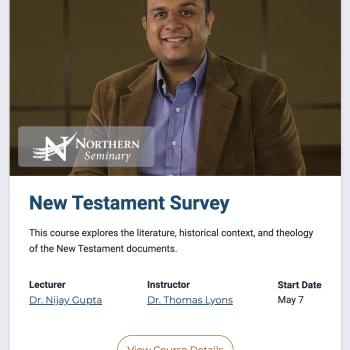 If Roy Ciampa and Brian Rosner’s new 1 Corinthians commentary (Pillar, Eerdmans, 2010) fell off of my bookshelf and landed on me, I would be in the hospital. It is HUGE (900+ pages). It is not only physically “weighty,” it also has exegetical and theological gravitas. Simply put, it makes a series of important contributions to the study of 1 Corinthians, both at a broad level (big picture thinking on 1 Corinthians) and in a number of smaller exegetical arguments.
If Roy Ciampa and Brian Rosner’s new 1 Corinthians commentary (Pillar, Eerdmans, 2010) fell off of my bookshelf and landed on me, I would be in the hospital. It is HUGE (900+ pages). It is not only physically “weighty,” it also has exegetical and theological gravitas. Simply put, it makes a series of important contributions to the study of 1 Corinthians, both at a broad level (big picture thinking on 1 Corinthians) and in a number of smaller exegetical arguments.
If you don’t know, the evangelical “Pillar” series (edited by D.A. Carson) aims to
“blend…rigorous exegesis and exposition, with an eye alert both to biblical theology and the contemporary relevance of the Bible, without confusing the commentary and the sermon” (xiv).
Several volumes already published in this series have become eminent, including ones on John (Carson) and Ephesians (P.T. O’Brien).
Ciampa, who taught me at Gordon-Conwell, is a master-interpreter – careful, competent, and an expert in Pauline theology. Rosner, once at Aberdeen (and Ciampa’s former doctoral supervisor), now at Moore, is well-trained in 1 Corinthians and Pauline ethics. Together, they make an outstanding team.
Let’s talk about the introduction. Compared to most, this 50+ page intro offers much. They have a knack for boiling heavy issues down to simple language. What is wrong with the Corinthians? They have bought into secular social values that conflict with the values of Christ and his kingdom. They are worldly: “[The Corinthians] were Hellenists through and through, and this eschatological, cross-centered, body-affirming, Jewish sect called Christianity demanded that they enter another theological and ethical world” (5).
Ciampa and Rosner propose that Paul takes a “Jewish” approach to dealing with this in the letter, working with four main topics: wisdom, sexuality, worship, and resurrection. The “Jewish” part is an overarching concern against impurity and in favor of the glory of God. (While I think they are on to something, they downgrade “Greco-Roman” approaches too far.)
At the end of the intro, they summarize Paul’s letter in this way: 1 Corinthians is…
Paul’s attempt to tell the church of God in Corinth that they are part of the fulfillment of the OT expectation of worldwide worship of the God of Israel, and as God’s eschatological temple they must act in a manner appropriate to their pure and holy status by becoming unified, shunning pagan vices, and glorifying God in obedience to the lordship of Jesus Christ (52).
I am not going to take the time to go through the whole commentary, but I will say that I appreciate that they are careful with things like verbal aspect (taking a Porter-ian approach). Also, they shy away from trying to settle perennially thorny issues. They present the options, and then promote the strongest view, sometimes their own original take, but not always. they do not rehearse only what is said in other commentaries, but dig into primary resources and also engage in scores of non-commentary secondary research.
Notes:
On the issue of 4:8, they disagree with Fee/Thiselton that Paul is dealing with over-realized eschatology. They side with Hays in thinking that Paul was countering Stoic/Cynic philosophy.
11:2-16: While they feel that “head” should be understood as carrying a sense of authority, and that this passage overall establishes and even celebrates gender distinctions, it still underscores “a commitment to fully integrating women and their gifts into the experience of the worshiping community” (503). This passage is about attire, respect, and order. As far as they are concerned, women today should not feel a sense of restriction in ministry based on this passage or others in 1 Corinthians. (I know Ciampa supports women in ministry; I don’t know anything about Rosner’s views.)
Why the head-coverings, though? Ciampa and Rosner survey the many views, but seek out a simple explanation: “…since men and women would share the same space in the worship setting, it would be necessary to maintain a clear gender distinction through the use/avoidance of head coverings” (514). If some Christian women wanted to express their freedom in Christ (as they thought Paul preached), he still wanted to safeguard them from being identified with the “new Roman women” who supported sexual looseness (520).
14:34-35: On the matter of silencing women, they see this as not an interpolation. The silence is not a universal command or concern, but contextual: “…what was being prohibited was for women to approach and ask men in the congregation questions about things they were not understanding” (727). The silence Paul was requiring was “non-liturgical.” They could pray and prophesy in public. If they had questions, it was best left to inquiring at home to maintain order.
Alongside Thiselton, Fee, Hays, and Barrett, this commentary will be one of my “go-to” works on 1 Corinthians (and not just because I am mentioned in the acknowledgments!)











